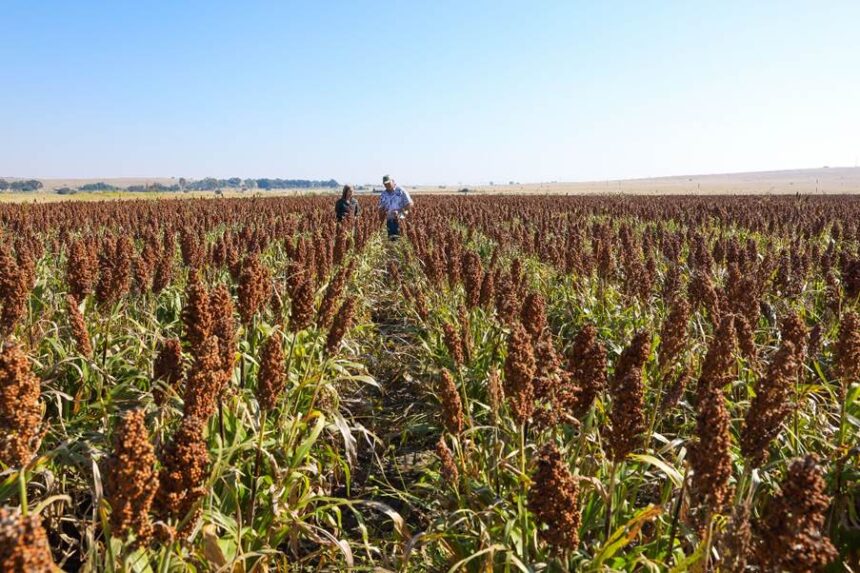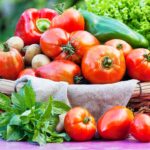Sorghum is an ancient grain. Originally domesticated in Africa, it has been a staple in diets across Asia, Africa, and India for thousands of years. Market dynamics relative to maize and wheat, however, have pushed sorghum into the back fields, so to speak.
Why sorghum?
If maize, wheat and rice are serving the population, why should sorghum get special attention? One of the main reasons is food security, which is a burning topic in many parts of the world. According to the Food and Agriculture Organisation (FAO), 282 million people in Africa remain undernourished and over a billion lack access to healthy diets. South Africa is regarded as food secure at a national level, but food insecurity persists on a household level.
Food security is not only about having a full stomach, however; it is also about ingesting sufficient nutrients to flourish physically, socially, emotionally and cognitively . Local statistics are tragic: 58.1% of households survive on nutrient-poor food, due to fresh food often being too expensive or inaccessible, and 27% of children under the age of five are stunted, according to the 2016 SA Demographic and Health Survey. Stunting is a condition that prevents children from ever achieving their full potential.
Optimal nutrition is partly a function of dietary variety and many households around the world follow a fairly limited diet. Financial constraints contribute to it, but so do habit, familiarity and availability of new and different ingredients. The latter is to a large extent a function of today’s commercial agriculture system in which economies of scale drive production, largely due to the imperative to keep a growing global population fed within the context of dwindling resources and, increasingly, climate uncertainty and unpredictability.
Sorghum ticks many of the nutrient-related boxes: It is a highly nutritious grain that contains a wealth of proteins, minerals and vitamins, and it is naturally gluten free. But it offers much more. A hardy crop well adapted to withstand drought and heatwave conditions, sorghum deserves attention purely from a climate change perspective. It can furthermore be grown in marginal soils and requires fewer inputs, such as fertiliser, to do well. Sorghum also offers producers several income streams. These include human consumption in the form of food and beverages (traditional beer is brewed with sorghum), animal feed and biofuel production.
This doesn’t mean that sorghum sells itself, however. In seasons with good rainfall, maize yields outcompete sorghum. Maize also benefits from well-established R&D programmes that have resulted in cultivars suited to a wide variety of conditions. Far fewer resources have been devoted to sorghum on a global scale.
Farmers are also deterred by market volatility, the impact of pests (birds especially) on yield, and, importantly, the fact that sorghum is the only grain subjected to VAT in South Africa – which seriously affects its competitiveness.
Sorghum has not disappeared completely, but it has become a marginalised crop in South Africa.
The revival strategy
In 2022, the Department of Science and Innovation (DSI) commissioned the sorghum value chain upgrade feasibility study to determine the state and potential of the local sorghum industry, given that sorghum is the second most important grain in Africa after maize, and the fifth most important globally (after maize, rice, wheat and barley).
In assessing the industry, the study found that local sorghum demand had slumped over the past decade as consumption of traditional African beer declined. In addition, exports to Botswana have stopped as that country became not only self-sufficient but now exports to South Africa. Over the same period, a precipitous decline in local production saw South Africa moving from being a net exporter to a net importer of sorghum, primarily from the US.
The study noted lessons to be learned from the US and Australia where sorghum is less costly than maize and benefits from quality research conducted by institutions such as the Queensland Sorghum Alliance and Texas A&M University. Furthermore, promotion and advertising by the United Sorghum Check-off Program in the US have contributed to Americans consuming 250% more sorghum now than five years ago. All this was achieved in a country with no historical ties to sorghum, unlike South Africa, which is on the continent where sorghum was first domesticated. Imagine the results we can achieve by tapping into this rich legacy.
The DSI’s feasibility study set the objective to improve the competitiveness of sorghum and increase local production to 500 000 tons per annum, local consumption by 15% per year, and the export market by 250 000 tons per annum.
To achieve this, 100 000 hectares of new sorghum must be planted and a rural hub for sorghum food processing established – the Eastern Cape has been earmarked for this – to exploit entrepreneurial opportunities. The National Treasury will also be engaged to achieve VAT-exempt status for sorghum.
Driving these outcomes is the Sorghum Cluster Initiative (SCI) that was established to coordinate efforts to improve the complete sorghum value chain – from genetics and seed, to processing and marketing. Joining forces under the SCI umbrella are the departments of agriculture and science and innovation, as well as the Sorghum Forum, whose members include Grain SA, the National Agricultural Marketing Council, Southern African Grain Laboratories (SAGL) and the South African National Seed Organisation (SANSOR).
Pannar’s involvement
Pannar runs one of the oldest sorghum breeding programmes in the country. Established in 1978, we have been working for almost 50 years already to supply farmers with ever-improving cultivars. In the recent review of our product portfolio, we opted to retain sorghum as one of our four focus crops (the others are maize, sunflower and soybeans), signalling our belief in sorghum’s role in agriculture and food security in South Africa.
Pannar’s involvement in the sorghum revival is focused on one of the SCI’s propriety areas, which aims to establish a sustainable pipeline of high-performing sorghum hybrids uniquely suited to local conditions and available to all producers. To this end, we participate in trials that showcase different locally available cultivars and share production-related information with farmers. As members of SANSOR we actively help to address the sorghum industry’s challenges, and we support Grain SA’s project to promote sorghum production among small-scale farmers with financial contributions and seed donations.
The benefits and uses of sorghum are many and varied and the time has come for our country to leverage them to the full. The sorghum revival strategy can help to address many of South Africa’s challenges: coping with climate change, ensuring food security and a healthier population, and, through expanding agriculture, creating employment. We stand to gain much from positioning this ancient grain to take its place in modern society.
Join 'Farmers Mag' WhatsApp Channel
Get the latest Farming news and tips delivered straight to your WhatsApp
CLICK HERE TO JOIN






